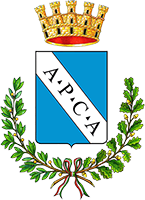OF ST. SECONDO

OF ST. SECONDO
The abbey of St. Secondo was built in the twelfth century on the ruins of a temple that belonged to the Silvestrini monks. The building consists of three parts: the first Benedictine abbey was established on the site of a Christian cemetery, the second dates back to the Romanesque period and the third is from the 1500’s.
The Abbey played an important political role, as it witnessed some crucial historical events, such as the Peace Treaty between Amelia and Todi, which was signed here. Its baroque interior is divided into two rooms: the actual sacred room and the Oratory of the Confraternity of the Good Death.
Here, a beautiful wooden choir stands out, together with some still-existing Death Confraternity’s holy vestments and some interesting paintings. Next to the abbey, there is an impressive Romanesque tower. The presence in the abbey of two roman artefacts is documented in the notebooks (1564) of the sculptor and antiquarian Giovanni Antonio Dosio (San Gimignano, 1533 – Caserta, 1611), that are nowadays preserved in the Staatsbibliothek, Berlin. The first, a cylindrical marble altar (1st century BC) with reliefs of dancing figures, is now hosted in the Museo Archeologico (reference panel nr. 3), while the second, an important inscription written in archaic Latin language (2nd century BC) has unfortunately been lost. The latter recorded that Titus Pettius had offered this altar to “Iove Optumo Maxsumo” (Jove, Optimus Maximus, the supreme god of the Roman pantheon).


